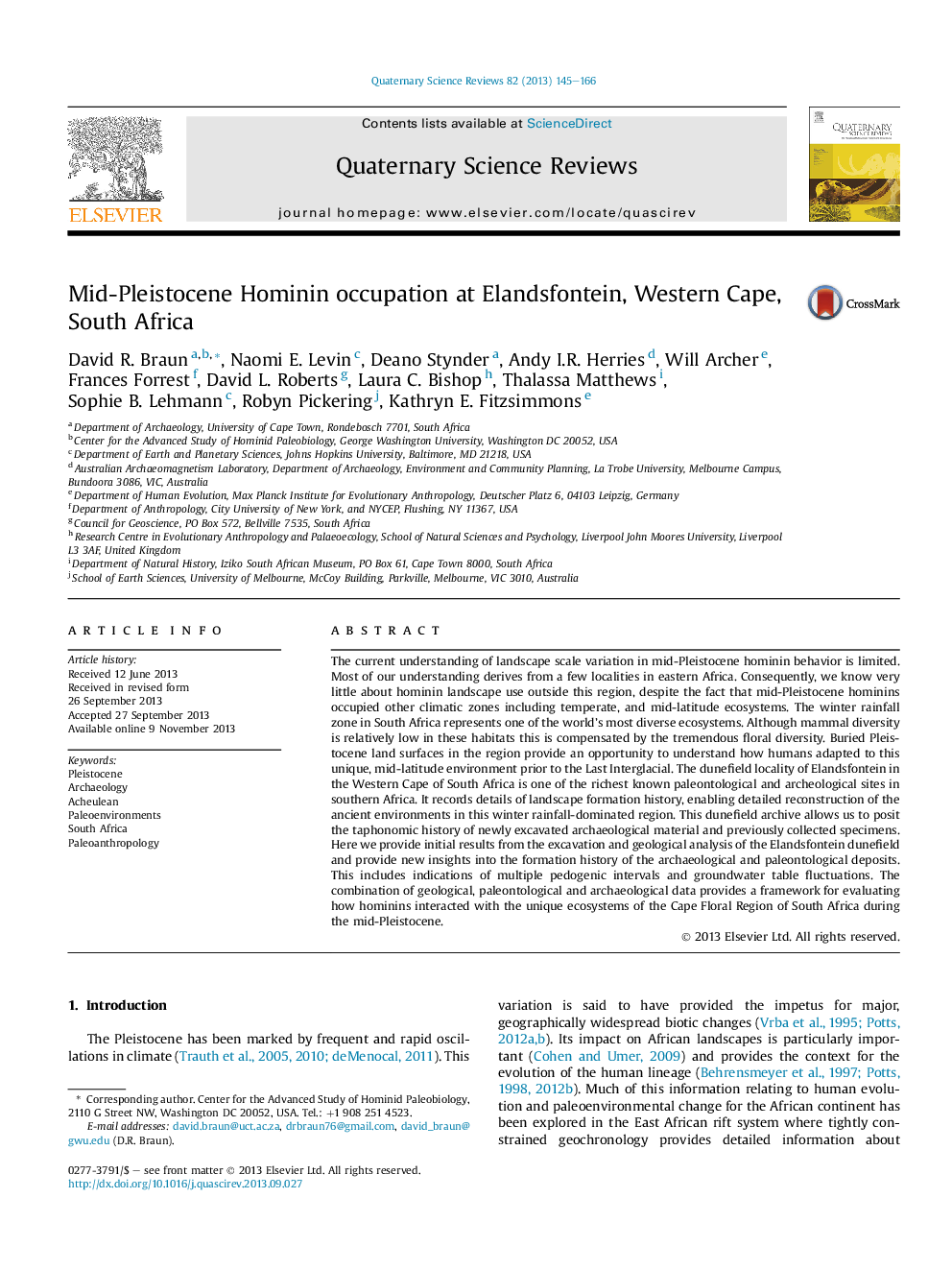| Article ID | Journal | Published Year | Pages | File Type |
|---|---|---|---|---|
| 4735436 | Quaternary Science Reviews | 2013 | 22 Pages |
•We report on new excavations, survey, and geological descriptions at Elandsfontein, South Africa.•There are multiple fossiliferous horizons at the Elandsfontein locality.•Excavations recovered in situ artifacts and fossils with limited post-depositional alteration.•Paleomagnetic and biostratigraphic data suggest fossils and artifacts may be older than 0.78 Ma.•Stratigraphic work indicates multiple phases of dune activity, pedogenesis and spring activity in this area.
The current understanding of landscape scale variation in mid-Pleistocene hominin behavior is limited. Most of our understanding derives from a few localities in eastern Africa. Consequently, we know very little about hominin landscape use outside this region, despite the fact that mid-Pleistocene hominins occupied other climatic zones including temperate, and mid-latitude ecosystems. The winter rainfall zone in South Africa represents one of the world's most diverse ecosystems. Although mammal diversity is relatively low in these habitats this is compensated by the tremendous floral diversity. Buried Pleistocene land surfaces in the region provide an opportunity to understand how humans adapted to this unique, mid-latitude environment prior to the Last Interglacial. The dunefield locality of Elandsfontein in the Western Cape of South Africa is one of the richest known paleontological and archeological sites in southern Africa. It records details of landscape formation history, enabling detailed reconstruction of the ancient environments in this winter rainfall-dominated region. This dunefield archive allows us to posit the taphonomic history of newly excavated archaeological material and previously collected specimens. Here we provide initial results from the excavation and geological analysis of the Elandsfontein dunefield and provide new insights into the formation history of the archaeological and paleontological deposits. This includes indications of multiple pedogenic intervals and groundwater table fluctuations. The combination of geological, paleontological and archaeological data provides a framework for evaluating how hominins interacted with the unique ecosystems of the Cape Floral Region of South Africa during the mid-Pleistocene.
